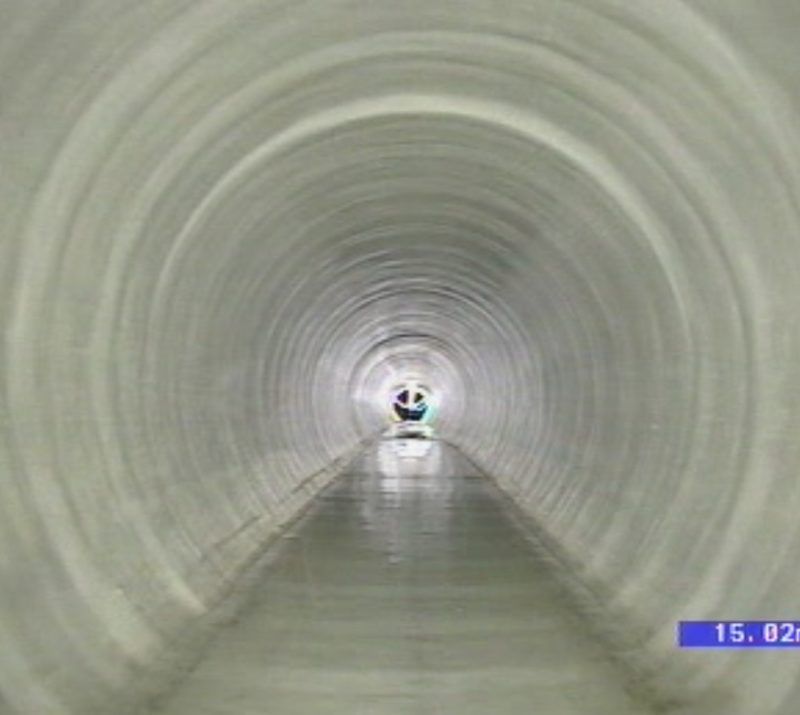Lanes breaks its UV reline record on rail project

Lanes Group has used ultra violet light technology to reline a 1300mm diameter rail culvert – the largest the company has renovated to date using this method to cure the liner.
The culvert on the Mole Valley Line at Great Bookham, in Surrey, was 250mm wider than any ultra violet (UV) liner the pipe reline specialist had carried out previously.
Lanes Group, a regular supplier on Network Rail drainage projects, was commissioned to handle the renovation by tier one rail maintenance and capital projects contractor Osborne.
After carrying out a survey of the 42-metre-long culvert, Lanes Reline Division proposed using UV light technology for the project.
Traditional hot water cure with scaffolding towers and cranes would have needed track possessions because of the culvert’s proximity to the railway. Tankers would have been required to take styrene-contaminated process water away to a treatment works.
UV light offered the fastest and most sustainable cured in place pipe (CIPP) alternative, so would better accommodate the culvert access issues and the weather-dependent nature of the works. Importantly, no track possessions would be needed, either.
Lanes Technical Project Manager Matt Mulheran said: “Downstream of the culvert were allotments, upstream a farm and stables.
“A bad experience with another contractor passing back and forth, churning up the land and damaging a water main, had made tenants extremely reluctant to allow any further plant and machinery through their site.
“We met representatives to explain our methodology, and show that there would be no damage to their property through constant site traffic. The UV method requires minimal plant and equipment and only one vehicle.
“It is also clean, quick and environmentally considerate, so the landowners were reassured by the plan. At the other side of the culvert, we used a 4×4 vehicle to carry the compressor and winch in through a field.”
Kate Woods for Osborne, said: “Being familiar with the issues surrounding work on rail properties, Lanes Group was able to find the optimum way of repairing the culvert, from both product specification and health and safety points of view.
“The team completed in just over two days with the absolute minimum disruption to the surroundings, so local landowners and Network Rail were happy with the results.”
In wet weather, the culvert, which takes overspill from three ponds, has a high flow volume. Without an available over-pump route, the team had to be sure that the work could be carried out during a dry spell, so forecasts were scrutinised to identify suitable work windows.
Enabling work included laying 150-metres of lightweight track matting through the allotments, along with aluminium trackway for hard standing at the work site, some vegetation clearance, and the temporary removal of fencing and a gate.
At 42m long, 1300mm in diameter, 11mm thick – and impregnated with resin – the liner weighed four tonnes. Moving it into position in the culvert would require extra pulling power.
The Lanes team added a snatch block to the winch cable, doubling the capacity of the pull through as the liner was hauled from its crate via a roller feed into the culvert. The reline team was also doubled in size, from four to eight, to support the installation process.
Once in position, the liner was inflated using air pressure to ensure it would fit the arch-profile top and the almost right-angled base of the tunnel. The UV light unit was then sent through the culvert, curing the resin in the liner to create a rigid structure.







